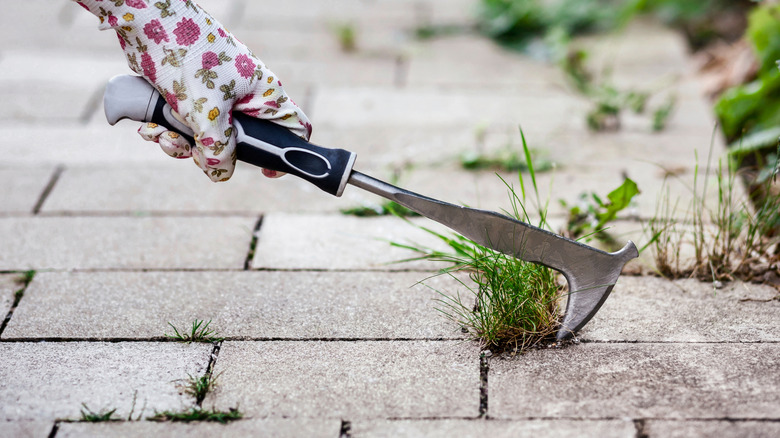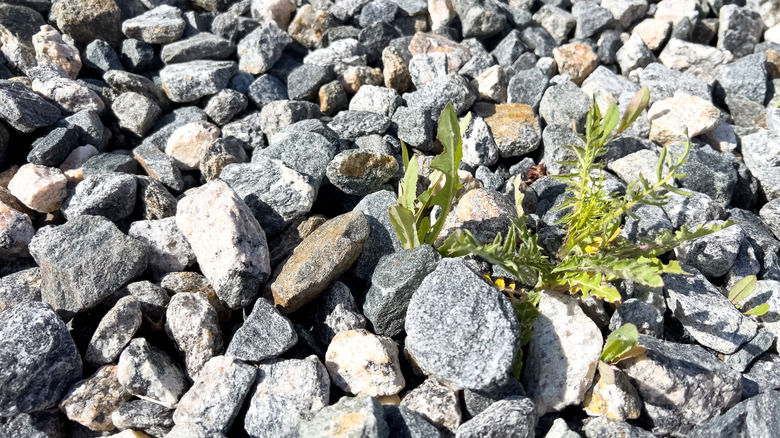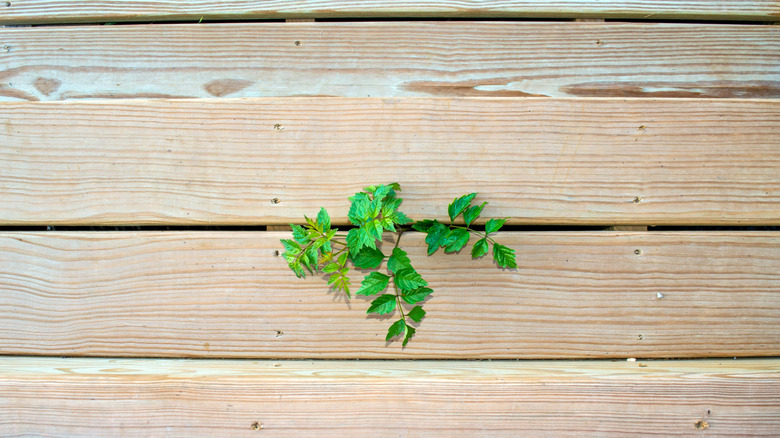Patio Flooring Options To Avoid If You Don't Want To Deal With Weeds
A well-designed patio should be a place of relaxation, not a constant battle against invasive weeds. However, the type of flooring you choose can significantly impact how much maintenance your outdoor space requires. Certain materials provide perfect environments for weeds to thrive, allowing them to pop through gaps and exploit shifting or porous surfaces. While a patio may look polished and weed-free when first installed, some flooring options quickly become high-maintenance as weeds sprout between cracks and crevices. Are you designing a patio? Avoid making these mistakes to keep weeds at a minimum.
While there are ways to get rid of and prevent weeds from growing, if long-term upkeep isn't something you want to deal with, then it's important you choose a material that naturally resists weed growth. Unfortunately, many homeowners unknowingly select flooring options that make weed control an ongoing struggle. Pavers, gravel, and even some types of wood decking may seem like appealing and durable options, but they are often breeding grounds for weeds to settle in. Rather than regularly having to pull out weeds or apply harsh chemicals, choosing the right flooring from day one will save you time and frustration. By understanding which materials encourage weed growth, you can avoid the hassle and ensure that your patio remains a low-maintenance retreat for years to come.
Pavers and gravel: A recipe for weed trouble
The aesthetics and versatility of pavers make them one of the most popular patio flooring options; however, they can be a nightmare as far as weed control goes. While individually placed pavers allow for creative patterns and a natural look, they also create tiny gaps where dirt and moisture accumulate, providing the perfect conditions for weeds to take root. As time passes, environmental factors can cause wider gaps between pavers, making it easier for weeds to bust through. Even with polymeric sand between the joints, weeds can still find their way in as the material deteriorates or washes away over time.
Gravel patios are even more problematic. While they are a casual and inexpensive alternative to solid flooring options, they also provide an ideal growing environment for weeds. Loose gravel lets organic debris, such as leaves and soil, settle between the stones, which creates a fertile ground for weed seeds to germinate. Even with a weed barrier underneath, persistent weeds can push through or establish themselves on top of the barrier, in the gravel itself. This can make removal very difficult. Although there are some tricks to prevent weeds from growing in your gravel, they will inevitably be a persistent problem.
Wood decking and brick: Unintended openings for weeds
Wood decking is often chosen for its warmth and classic appeal, but when it comes to weed control, it can be a risky option. A properly installed deck may look seamless at first, but the natural expansion and contraction of the wood will cause the boards to shift and leave gaps. These gaps can trap windblown seeds and organic material, creating great conditions for weeds to grow. If the deck is raised with space below it, weeds can end up growing through any gaps between the individual planks and are very hard to remove. While adding a weed barrier during installation or using chemicals can help reduce the issue, if you want to have a weed-free patio, wood is probably not the best material.
Brick patios offer similar challenges. While bricks are a classic, long-lasting option, they require mortar or sand in the joints, which can wear away or crack over time. As the filling between bricks weakens, gaps widen, creating the perfect opportunity for weeds to take hold. Moisture between bricks promotes weed growth, as does any shifting that happens through temperature variation or ground movement. Though constant maintenance and sealing can hinder weed growth, brick patios need regular care to stay weed-free. For homeowners looking for a patio that requires minimal intervention, solid, continuous surfaces like bigger concrete slabs or large-format tiles are far better alternatives.


